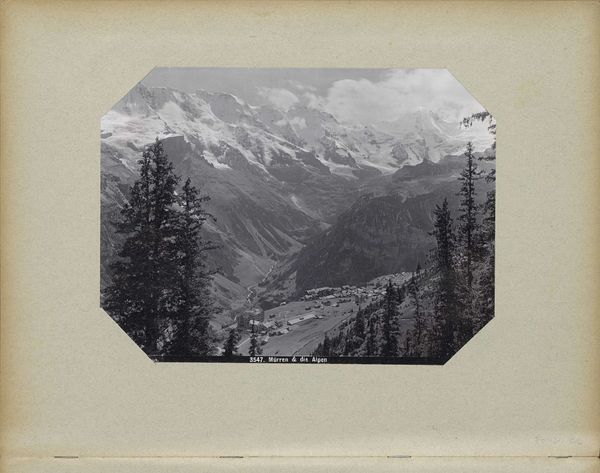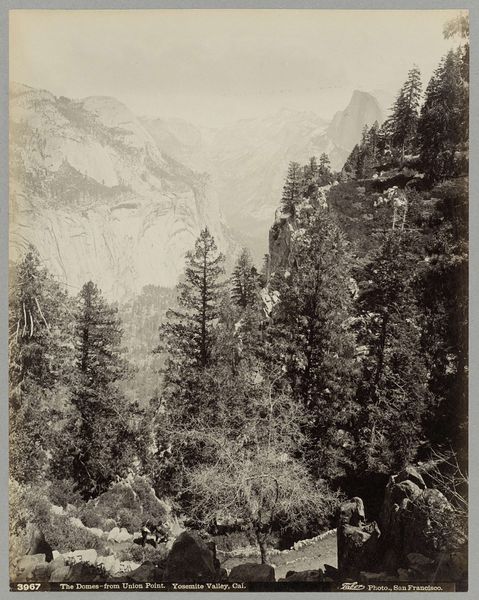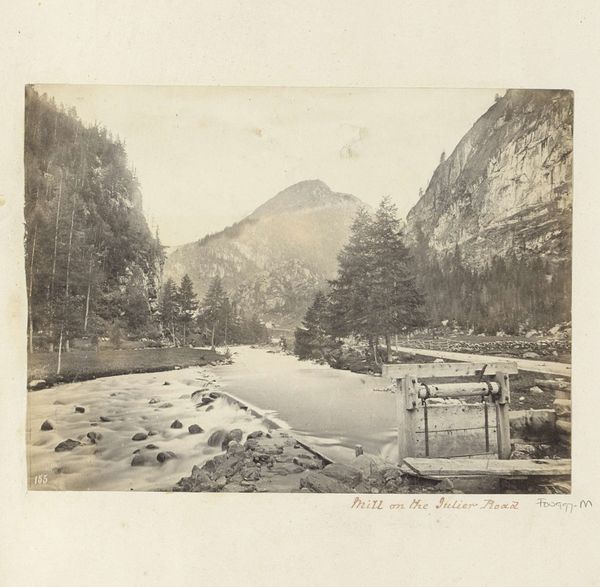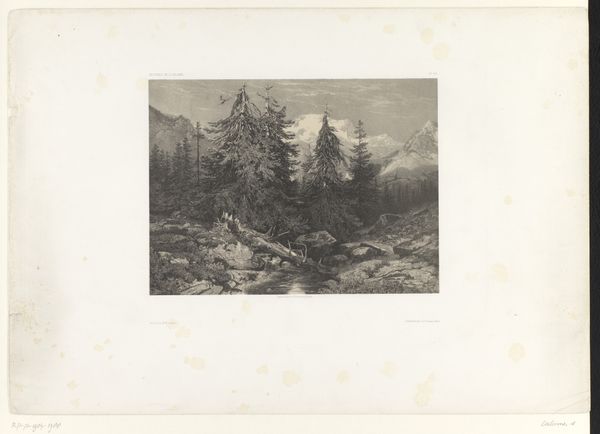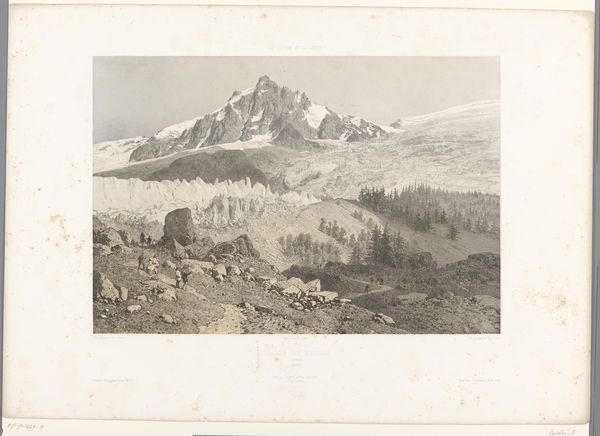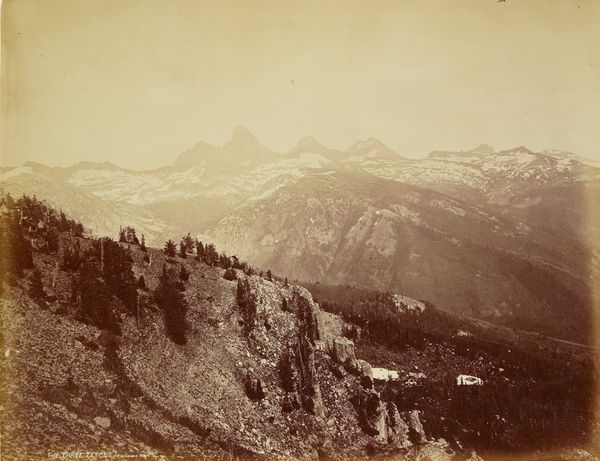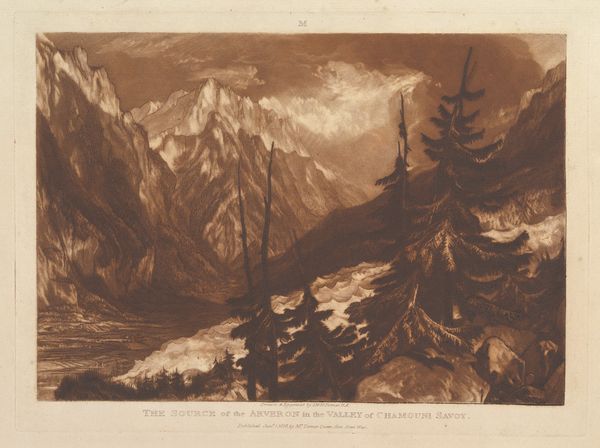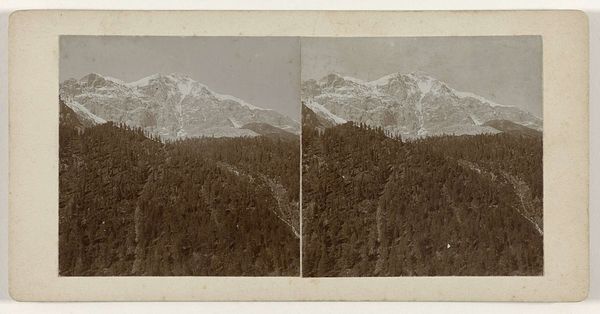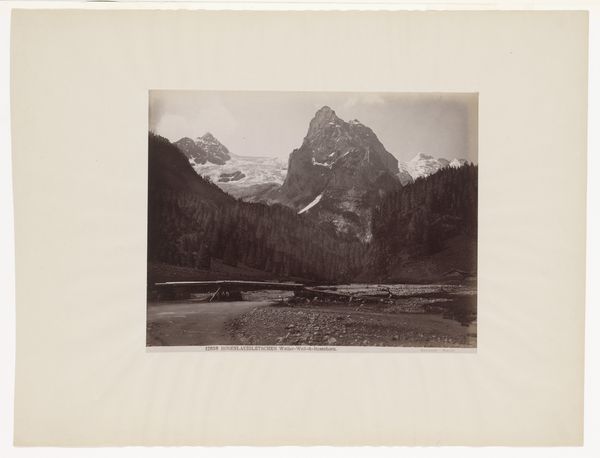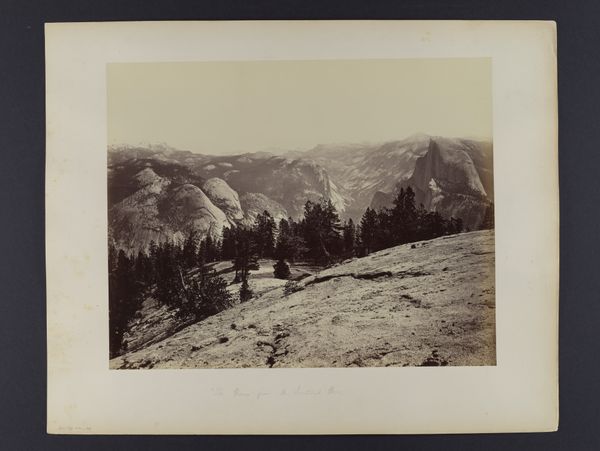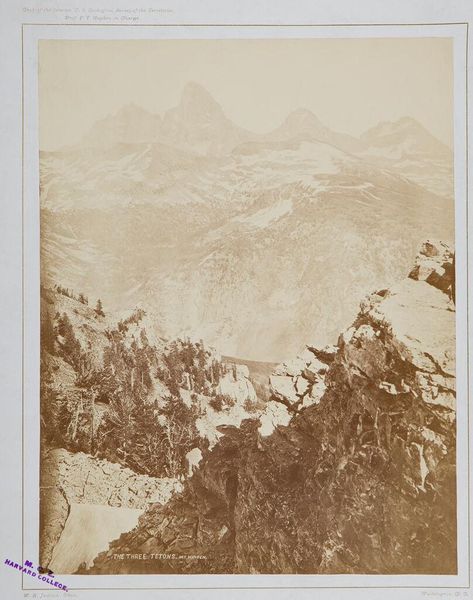
Gezicht op Innsbruck aan de voet van de Inndalketen (Noordketen), vanuit Villerweg before 1899
0:00
0:00
Dimensions: height 190 mm, width 244 mm
Copyright: Rijks Museum: Open Domain
Curator: Looking at this, I feel a strong sense of melancholy. There's a stark contrast between the imposing mountains and the almost miniature-looking town nestled beneath. Editor: Precisely, that's what I was thinking too! Let's consider this gelatin silver print more closely. It's entitled "View of Innsbruck at the Foot of the Inndalketen (Nordkette), from Villerweg" and is attributed to Fritz Gratl, dated before 1899. The material process here seems paramount; this print represents one of photography's key modes for mass producing images at the turn of the century, effectively turning vistas into easily-accessed commodities. Curator: That's a fascinating angle! The way this view has been carefully captured and then disseminated. Photography playing a role in how the public imagines Innsbruck. Do you see any evidence of its impact? Editor: Absolutely. These landscapes become accessible through popular media; think postcards or illustrated publications of the era. They contribute to a certain image of Innsbruck and of Tyrolean identity in relation to it. Mass reproduction enabled such scenes to reach larger audiences, shaping popular geographical and cultural imaginations. Curator: And look at the choice of vantage point too. It's deliberately elevated, giving a sense of dominion over the landscape and the city below, a statement of ownership and authority through the lens. Editor: Precisely! And what about the print itself as an object, though? This gelatin silver print embodies a key shift in photographic technology, enabling mass production. The materiality and relative affordability facilitated broader consumption and participation, altering social accessibility of both visual art and remote alpine destinations. Curator: So, what started as a view transforms into an object carrying specific cultural and socio-political messages, molded by its mass-production methods and availability, all shaping our collective gaze. It makes one reflect on how photographic art constructs and sells realities. Editor: I agree completely. Seeing Innsbruck represented this way has certainly deepened my understanding of the forces shaping our appreciation for both the material photograph and Tyrolean vistas more generally.
Comments
No comments
Be the first to comment and join the conversation on the ultimate creative platform.

